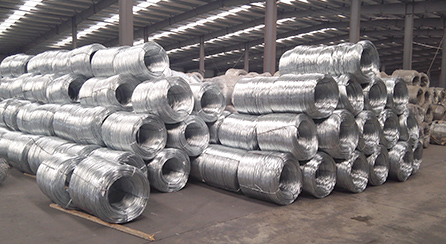Oct . 04, 2024 21:06 Back to list
Gabion Wall Solutions for Effective Retaining Structures in Landscaping and Construction
The Role of Gabion Retaining Walls in Modern Construction
Gabion retaining walls have become an essential component in modern construction, blending aesthetics with functionality. These walls, made from wire mesh cages filled with stones, offer a versatile solution for various engineering challenges, particularly in landscaping, civil engineering, and environmental applications.
Understanding Gabion Structures
Gabions originated from the Italian word gabbione, which means large cage. Traditionally used for military purposes and flood control, gabions are now widely employed in civil engineering projects. The basic structure consists of a sturdy wire mesh that is filled with natural stones or other materials to create a robust and durable wall. These structures are flexible and can adapt to the terrain, providing significant advantages over conventional retaining walls.
Benefits of Gabion Retaining Walls
One of the primary advantages of gabion walls is their permeability, which allows water to flow through the structure rather than becoming trapped behind it. This characteristic helps to mitigate water pressure, reducing the likelihood of wall failure during heavy rains or flooding. The ability of gabions to manage water effectively makes them an ideal choice for slope stabilization and erosion control.
Another notable benefit is their environmental appeal. Gabion walls can be integrated into natural landscapes with minimal disruption. The use of local stones not only reduces transportation costs but also ensures that the structure harmonizes with the surrounding environment. Over time, vegetation can grow in and around the gabions, further enhancing their appearance and ecological value.
gabion soutènement factory

Applications in Construction
Gabions are versatile and can be used in various applications. They are frequently deployed in retaining walls for roads, highways, and bridges, where they provide necessary support and stability. Additionally, gabion structures are used in parks and recreational areas to create seating, provide windbreaks, and enhance landscaping features. Their adaptability allows them to serve both functional and aesthetic purposes.
In urban settings, gabion walls are often employed to improve soil retention on slopes, preventing landslides and property damage. They can also be used creatively in architectural designs, serving as noise barriers or decorative elements in gardens and public spaces. This multifaceted application highlights the flexibility of gabion structures in addressing both environmental and engineering challenges.
Sustainability and Future Prospects
As the construction industry moves towards more sustainable practices, gabion retaining walls are gaining popularity. Their use of natural materials, low carbon footprint, and ability to promote biodiversity make them an attractive option for environmentally conscious projects. Furthermore, as technology advances, the design and manufacturing processes of gabion structures are becoming more efficient, enabling broader adoption in both commercial and residential construction.
In conclusion, gabion retaining walls represent a modern solution to age-old challenges in construction and landscaping. Their strength, versatility, and environmental benefits make them an ideal choice for a wide range of applications. As the industry continues to evolve, gabions will undoubtedly play a crucial role in shaping the future of sustainable construction practices.
-
The Role of Galvanized Gabion Mesh in Riverbank Protection
NewsJun.26,2025
-
The Role of Gabion Basket Raised Bed in Sustainable Gardening
NewsJun.26,2025
-
Quality Assurance of Wire Mesh Gabion Baskets
NewsJun.26,2025
-
Installation Guide for Welded Gabion Box
NewsJun.26,2025
-
How to Choose the Right Gabion Box
NewsJun.26,2025
-
Different Types of Gabion Wire Mesh
NewsJun.26,2025
-
Why PVC Coated Gabion Mattress Is the Best Solution for Long-Term Erosion Control
NewsMay.23,2025






